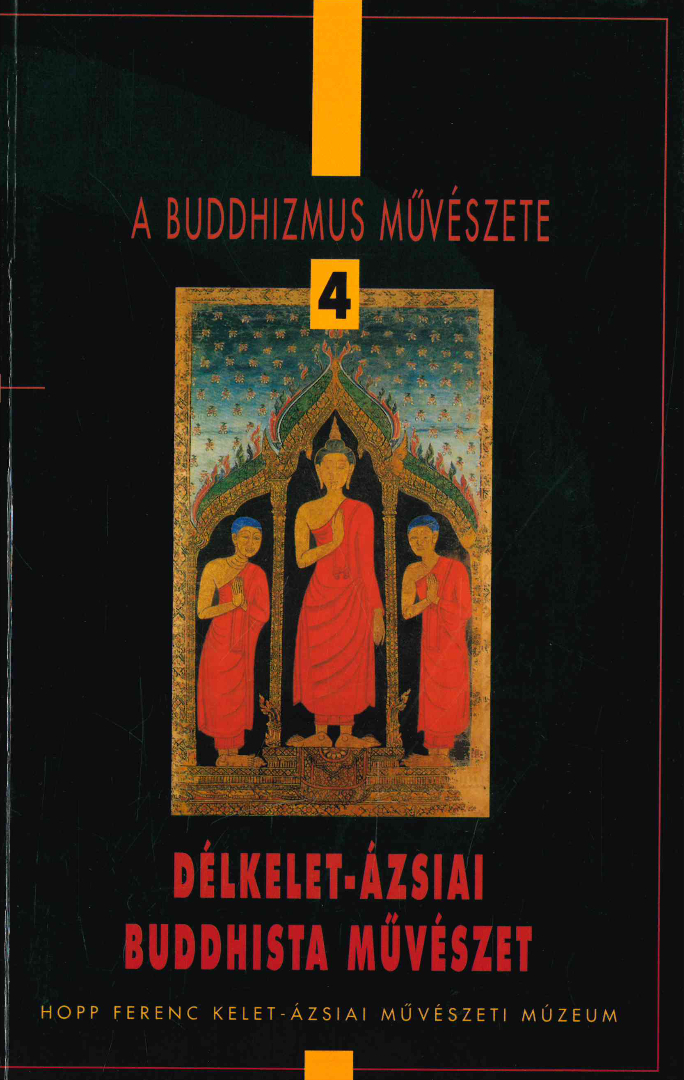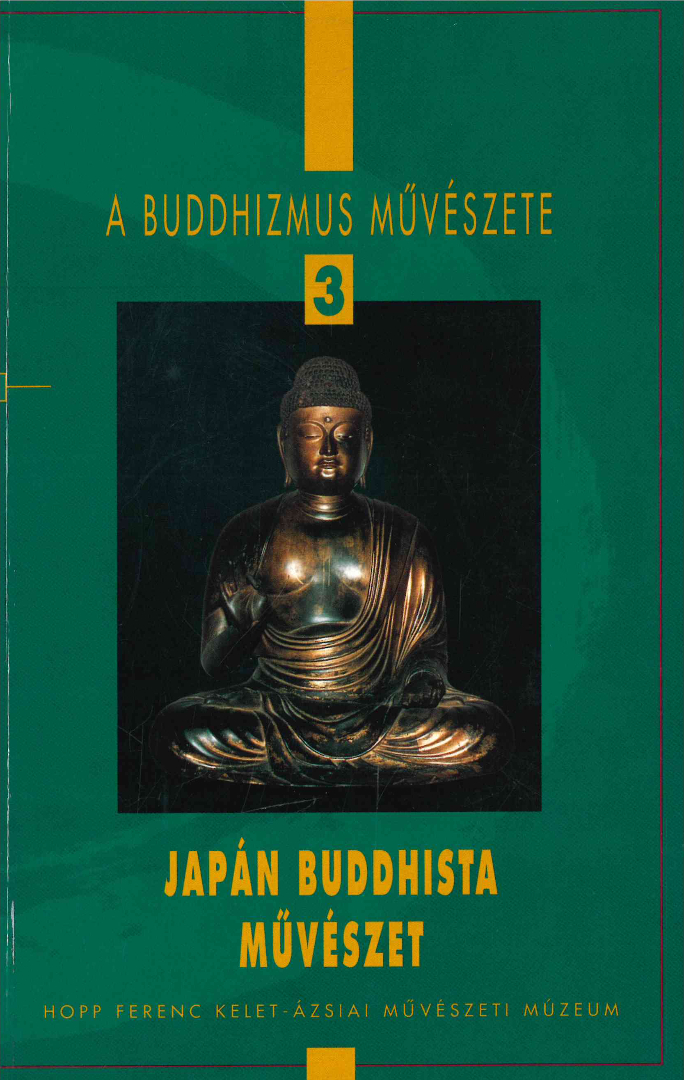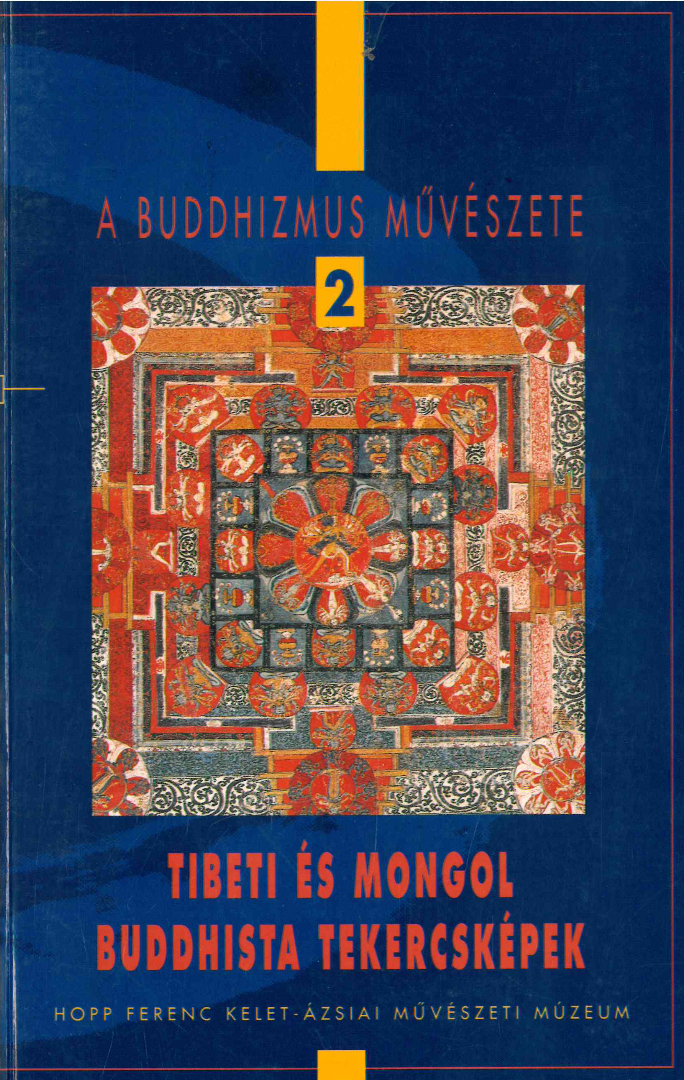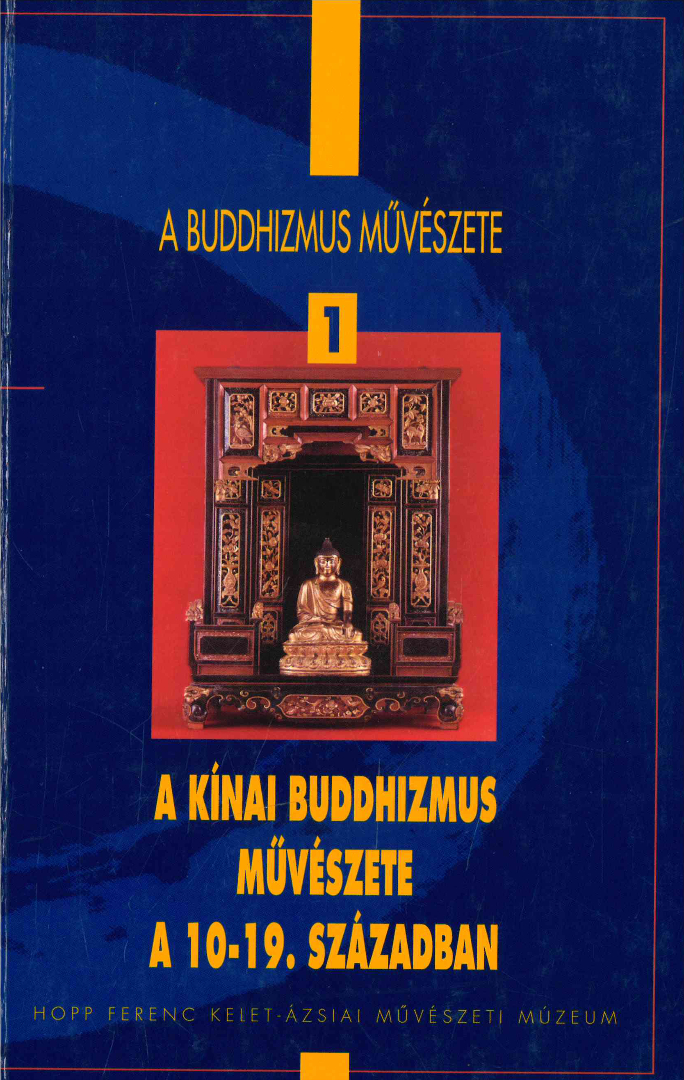The Art of Buddhism
The Art of Buddhism
Language: Hungarian
Series Editor: Terézia Bardi
ISSN: 1217-8268
The volumes of the series The Art of Buddhism were published as catalogues of a series of exhibitions of the Buddhist collections of the Ferenc Hopp Museum of Eastern Asiatic Arts. The volumes, besides describing Buddhist art in general, shed light on the richness of the specific Buddhist art of each region, and help readers orientate in the world of Buddhist art with numerous illustrations and descriptions of artefacts. The series consists of four volumes, published from 1994 to 1997.
The following publications are available only in Hungarian.
 |
Délkelet-ázsiai buddhista művészet [“Buddhist Art in Southeast Asia”]The last volume of the series gives an insight into the Buddhist art of Burma, Thailand, Laos and Cambodia – arts that are interrelated, yet, at the same time, very distinct. Thus it offers a description of the art of the Southern or Theravada school of Buddhism. The material (falling in line with the Hinayana tradition) is amended with an introduction into the Mahayana Buddhist art of Vietnam. This is the first time the Museum has attempted to give a comprehensive description of Southeast Asian Buddhist art within the series “The Art of Buddhism”. The Southeast Asian Buddhist material of the Ferenc Hopp Museum of Eastern Asiatic Arts consists of approximately 300 artefacts. The core of the collection is made up by the items purchased by Ferenc Hopp and János Xántus at the end of the 19th century. Later, the collection was enriched with material from famous private collectors. Catalogue of the exhibition Buddhist Art in Southeast Asia (20 November 1996 – 1 March 1998). Exhibition organised by and catalogue written by: Györgyi Fajcsák, Zsuzsanna Renner
|
 |
Japán buddhista művészet [“Buddhist Art in Japan”]The Japanese Buddhist collection of the Ferenc Hopp Museum of Eastern Asiatic Arts consists of approximately 200 items: sculptures, paintings, home shrines and ritual objects. Most of the Buddha images depict Amida Buddha, the central deity of the most popular Jodo school. With the exception of some early Buddhist images, the items of the collection date back to the 17th–19th centuries. The core of the Museum’s Japanese exhibition is made up by the items bought by the Museum’s founder, Ferenc Hopp during his round-the-world tours from 1881 to 1914. He visited Japan thrice and purchased primarily items of applied arts. In 1907, the material of the Ferenc Hopp Museum was extended with the Japanese items purchased by the count Péter Vay on behalf of the state. The majority of the Buddhist sculptures and paintings published in this book belong to the Vay’s collection. Catalogue of the exhibition Buddhist Art in Southeast Japan (26 June 1996 – April 1999). Exhibition organised and catalogue written by: Éva Cseh ISBN: 9637098500 |
 |
Tibeti és mongol buddhista tekercsképek [“Tibetan and Mongolian Buddhist Scroll Paintings”]The second volume of the series “The Art of Buddhism” focuses mainly on Tibetan and Mongolian religious paintings, providing a list of the main monastic sites of Tibetan Buddhism. It is an attempt to give an overview of the history, iconography and iconometry of Tibetan and Mongolian art, along with the rites related to arts. The Tibetan-Nepalese collection of the Ferenc Hopp Museum of Eastern Asiatic Arts consists of approximately 200 artefacts (the majority of which are small sculptures or scroll paintings). The Mongolian collection of approximately 300 items also includes ethnographic items. The Tibetan-Nepalese collection evolved thanks to the work of Imre Schwaiger, an art collector and art dealer born in Szeged who lived in Delhi and London. The Mongolian collection evolved thanks to the continued efforts of collectors. Catalogue of the exhibition “Tibetan and Mongolian Buddhist Scroll Paintings” (20 October 1995 – 4 June 1996). Exhibition organised and catalogue written by: Béla Kelényi, Judit Vinkovics ISBN: 963-7098-48-8 |
 |
A kínai buddhizmus művészete a 10-19. században [“Buddhist Arts in China in the 10th-19th Centuries”]The Chinese Buddhist material of the Ferenc Hopp Museum of Eastern Asiatic Arts consists of approximately 300 artefacts. The majority of them are sculptures (metal, wood, lacquer), paintings, textiles, ceremonial vessels. The collection gives a comprehensive view of Chinese Buddhist art, from its beginnings until the 20th century. The backbone of the material dates back to the centuries after the Tang period. The volume describes the iconography of Avalokiteshvara, Pu-tai and the lohans, and the popular cults of late Chinese Buddhism on the basis of the structure of Chinese Buddhist monasteries. The Chinese Buddhist collection evolved as a result of long and continued efforts of collectors and researchers. It grew thanks to the work and sacrifices of Ferenc Hopp, founder of the Museum, as well as to the gifts and donations of private collectors who collected such items with great enthusiasm and expertise. Catalogue of the exhibition Buddhist Arts in China in the 10th-19th Centuries (9 March 1994 – 30 April 1995). Exhibition organised by and catalogue written by: Györgyi Fajcsák ISBN: 9637098402 |